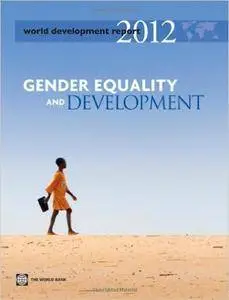World Development Report 2012: Gender Equality and Development by World Bank
English | Sep. 28, 2011 | ISBN: 082138810X | 458 Pages | PDF | 26 MB
English | Sep. 28, 2011 | ISBN: 082138810X | 458 Pages | PDF | 26 MB
The lives of women around the world have improved dramatically, at a pace and scope diffi cult to imagine even 25 years ago. Women have made unprecedented gains in rights, education, health, and access to jobs and livelihoods. More countries than ever guarantee equal rights in property, marriage, and other domains. Gendergaps in primary schooling have closed in many countries, while in a third of all countries girls now outnumber boys in secondary school. And more young women than men attend universities in 60 countries. Women are using their education to participate more in the labor force: they now make up for 40 percent of the global labor force and 43 percent of its farmers. Moreover, women now live longer than men in every region of the world. Despite the progress, gaps remain in many areas. Women are more likely to die―relative to males―in many low- and middle-income countries than their counterparts in rich countries―especially in childhood and during their reproductive years. Primary and secondary school enrollments for girls remain much lower than for boys in many Sub-Saharan African countries and some parts of South Asia, as well as among disadvantaged populations. Women are more likely than men to work as unpaid family laborers or in the informal sector, to farm smaller plots and grow less profi table crops, operate in smaller fi rms and less profi table sectors, and generally earn less. Women―especially poor women―have less say over decisions and less control over household resources. And in most countries, fewer women participate in formal politics than men and are underrepresented in the upper echelons.
The World Development Report 2012: Gender Equality and Development argues that closing these persistent gender gaps matters. It matters because gender equality is a core development objective in its own right. But it is also smart economics. Greater gender equality can enhance productivity, improve development outcomes for the next generation, and make institutions more representative.
Building on a growing body of knowledge on the economics of gender equality and development, the Report identifi es the areas where gender gaps are most signifi cant―both intrinsically and in terms of their potential development payoff―and where growth alone cannot solve the issues. It then sets forth four priorities for public action:
• Reducing excess female mortality and closing education gaps where they remain
• Improving access to economic opportunities for women
• Increasing women’s voice and agency in the household and in society
• Limiting the reproduction of gender inequality across generations.
Policies need to focus on the underlying determinants of gender gaps in each priority area. In some priority areas―such as excess female mortality in infancy and early childhood as well as in the reproductive years―improving service delivery (especially of clean water and sanitation, and maternal care) is of primary importance. For other priority areas―such as gender gaps in earnings and productivity―policies need to tackle the multiple constraints that originate in the workings of markets and institutions to limit progress. Policy makers will need to prioritize these constraints and address them simultaneously or sequentially.
While domestic policies are central to reducing gender inequalities, development partners should focus on complementing these efforts in each of the four priority areas, and on supporting evidence-based public action through better data, evaluation, and learning. This will require a mix of more funding, efforts to foster innovation and learning, and broader partnerships. The funding should be directed particularly to supporting the poorest countries in reducing excess female mortality and gender gaps in education. Investments are needed to improve the availability of better gender-disaggregated data and support more experimentation and systematic evaluation. And the partnerships should involve the private sector, development agencies, and civil society organizations.



